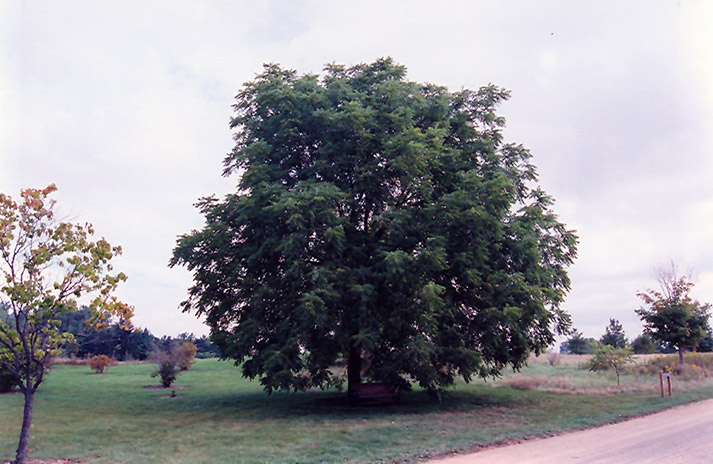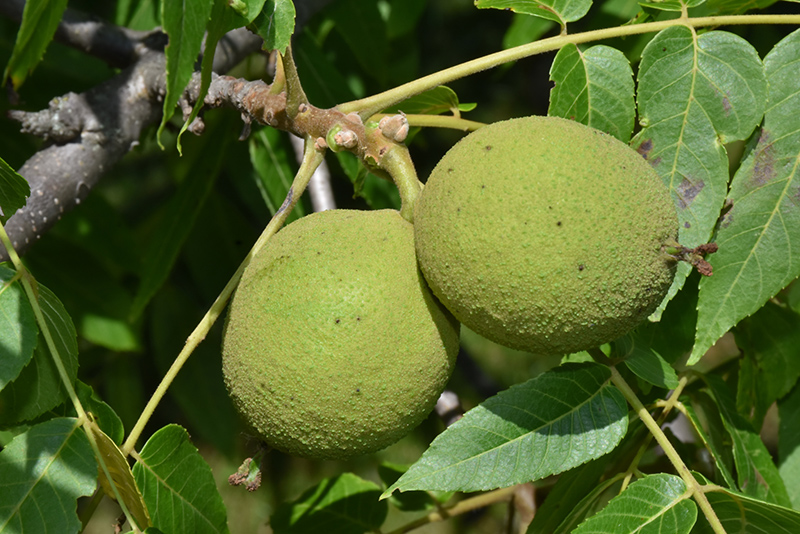Plant Finder
Height: 70 feet
Spread: 60 feet
Sunlight:
![]()
Hardiness Zone: 3a
Description:
A massive and dominating shade tree, best reserved for larger landscapes and parks; compound leaves impart an interesting ferny texture, walnuts are edible and very tasty but hard to crack, attract squirrels, can be somewhat messy; wood is highly prized
Edible Qualities
Black Walnut is a large tree that is typically grown for its edible qualities. It produces large brown oblong nuts in hard shells which are usually ready for picking from early to late fall. The nuts have a sweet taste and an oily texture.
The nuts are most often used in the following ways:
- Fresh Eating
- Baking
Features & Attributes
Black Walnut has dark green deciduous foliage on a tree with a round habit of growth. The large pinnately compound leaves turn yellow in fall. It produces brown nuts in late fall. The fruit can be messy if allowed to drop on the lawn or walkways, and may require occasional clean-up. The furrowed black bark adds an interesting dimension to the landscape.
This is a deciduous tree with a more or less rounded form. Its average texture blends into the landscape, but can be balanced by one or two finer or coarser trees or shrubs for an effective composition. This plant will require occasional maintenance and upkeep, and is best pruned in late winter once the threat of extreme cold has passed. It is a good choice for attracting squirrels to your yard. It has no significant negative characteristics.
Aside from its primary use as an edible, Black Walnut is sutiable for the following landscape applications;
- Shade
- Orchard/Edible Landscaping
Planting & Growing
Black Walnut will grow to be about 70 feet tall at maturity, with a spread of 60 feet. It has a high canopy of foliage that sits well above the ground, and should not be planted underneath power lines. As it matures, the lower branches of this tree can be strategically removed to create a high enough canopy to support unobstructed human traffic underneath. It grows at a fast rate, and under ideal conditions can be expected to live to a ripe old age of 120 years or more; think of this as a heritage tree for future generations! This is a self-pollinating variety, so it doesn't require a second plant nearby to set fruit.
This tree is typically grown in a designated area of the yard because of its mature size and spread. It should only be grown in full sunlight. It is very adaptable to both dry and moist locations, and should do just fine under average home landscape conditions. It is not particular as to soil pH, but grows best in rich soils. It is highly tolerant of urban pollution and will even thrive in inner city environments. This species is native to parts of North America.
A NetPS Plant Finder tool


